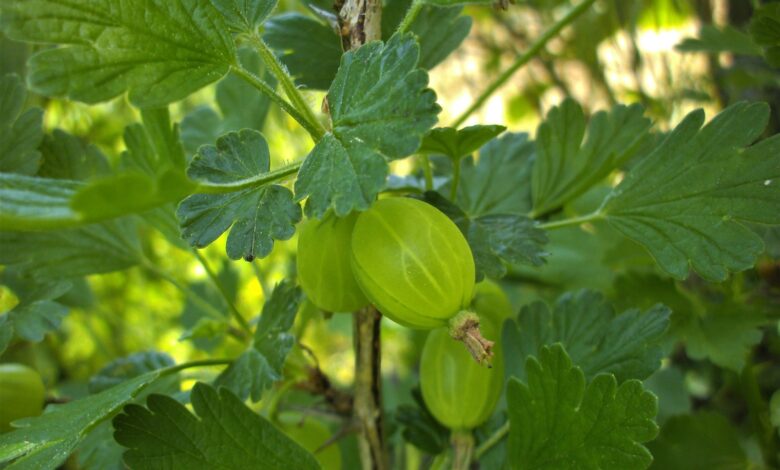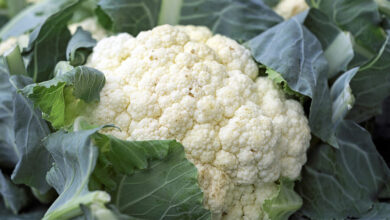Gooseberries: Health Benefits And Side Effects

Many people associate the taste of gooseberries with hot summer days in the country. The berry begins to grow actively in early summer, and the harvest can be harvested in late June-early July. In appearance, the gooseberry cannot be confused with anything – it can be green, red, yellow in a slightly translucent strip. In addition to eye-catching colours and taste, this berry has a composition rich in vitamins and microelements.
The History Of Gooseberries In Nutrition
Gooseberries were originally grown as an ornamental plant: in the 12th century, they could be found near the homes of wealthy boyars. According to legend, they began to eat it after an interesting incident: Tsar Ivan III saw an old woman in the garden trying to catch a chicken. He ordered to give her a gift: he handed a couple of birds from his kitchen. The woman in response treated the king with gooseberry jam. Over time, at the court, it became almost a traditional delicacy. Europeans started cultivating gooseberries later. In the XVII-XIX centuries, it became widespread in France and England. Residents of foggy Albion even called the yellow gooseberry a female berry due to its high glucose content.
The Calorie Content Of Gooseberries
The berry contains a large amount of vitamins A and E – they help the reproductive system, improve the condition of the skin, hair and nails. Gooseberries also contain calcium, manganese, selenium, and iron. In sufficient quantities, they have a positive effect on the functioning of many vital organs: the heart, kidneys, and intestines.
In addition to vitamins, nutrients and minerals, gooseberries contain a plant analogue of the joy hormone serotonin. 100 grams of berries provide a third of the daily requirement for vitamin C and the daily requirement for P-active compounds.
| Calories per 100 grams | 45 kcal |
| Squirrels | 0.7 g |
| Fats | 0.2 g |
| Carbohydrates | 9.1 g |
The Benefits Of Gooseberries
Gooseberries have an anti-inflammatory, diuretic and strengthening effect on the body. Thanks to copper, iron, manganese, biotin, B vitamins, high content of vitamin C and A, gooseberries will not only be an excellent addition to the diet, but will also help you get back on your feet faster in the fight against various diseases.
Potassium and magnesium contained in this berry have a positive effect on the functioning of the cardiovascular system: they strengthen the walls of blood vessels, making them stronger and more elastic. Gooseberries contain a large amount of chlorophyll (from 4-5 to 10 mg), which has pronounced haematogenous properties. And the plant analogue of serotonin mentioned above not only improves mood, but also helps in the prevention of certain forms of malignant tumours.
In terms of iron content, this berry surpasses even apples. Gooseberries contain pectin – thanks to this, when eating berries, there is no sharp jump in insulin due to the content of natural sugars. Also, gooseberries are a source of routine: this substance helps to strengthen the walls of blood vessels and generally has a positive effect on the functioning of the cardiovascular system, clarifies.
Gooseberries contain molybdenum, which is necessary for the synthesis of haemoglobin. During clinical trials, it was found that gooseberries should be included in the diet for chronic diseases and colds: all this is due to the formation of interferon.
The Side Effects Of Gooseberries
It is not recommended to eat gooseberries for people suffering from peptic ulcer. In the stage of exacerbation of the disease, it is better to abandon gooseberries in favour of more “quiet” food: cereals, soups, boiled meat. Caution should be taken with berries and other diseases of the gastrointestinal tract.
Due to the high content of vitamins and minerals, gooseberries can cause hyperavitaminosis. But only if you eat more than the norm.
The Use Of Gooseberries In Medicine
The berry is included in diabetic nutrition for heart disease, atherosclerosis, obesity and anemia. (5). Also used as a diuretic and choleretic agent, laxative and diuretic.
With colds, weakening of the immune system, you should pay attention to the diet. Due to the high content of vitamin C, gooseberries, like other fruits and berries, can be included in the diet. Gooseberry tea has the greatest effect on the general condition of the body: a glass of 250 millilitres contains 20 times more vitamin C than a glass of orange juice.
Gooseberries should be included in the diet for anemia: both iron deficiency and pernicious (lack of vitamin B-12), folic anemia.
Despite the fact that with certain diseases of the gastrointestinal tract, gooseberries should be eaten with caution, it has a relaxing effect on the oesophagus and intestines. It will be especially useful for those who suffer from constipation.
Gooseberries contain a large amount of pectin and fibre. This is a plus for those who suffer from stomach and intestinal problems. May be included in the diet for hypoacid gastritis. The disease is characterized by low acidity of gastric juice. Gooseberries also help to increase it. With kidney problems, this berry can also serve as an assistant: it improves the outflow of bile.




